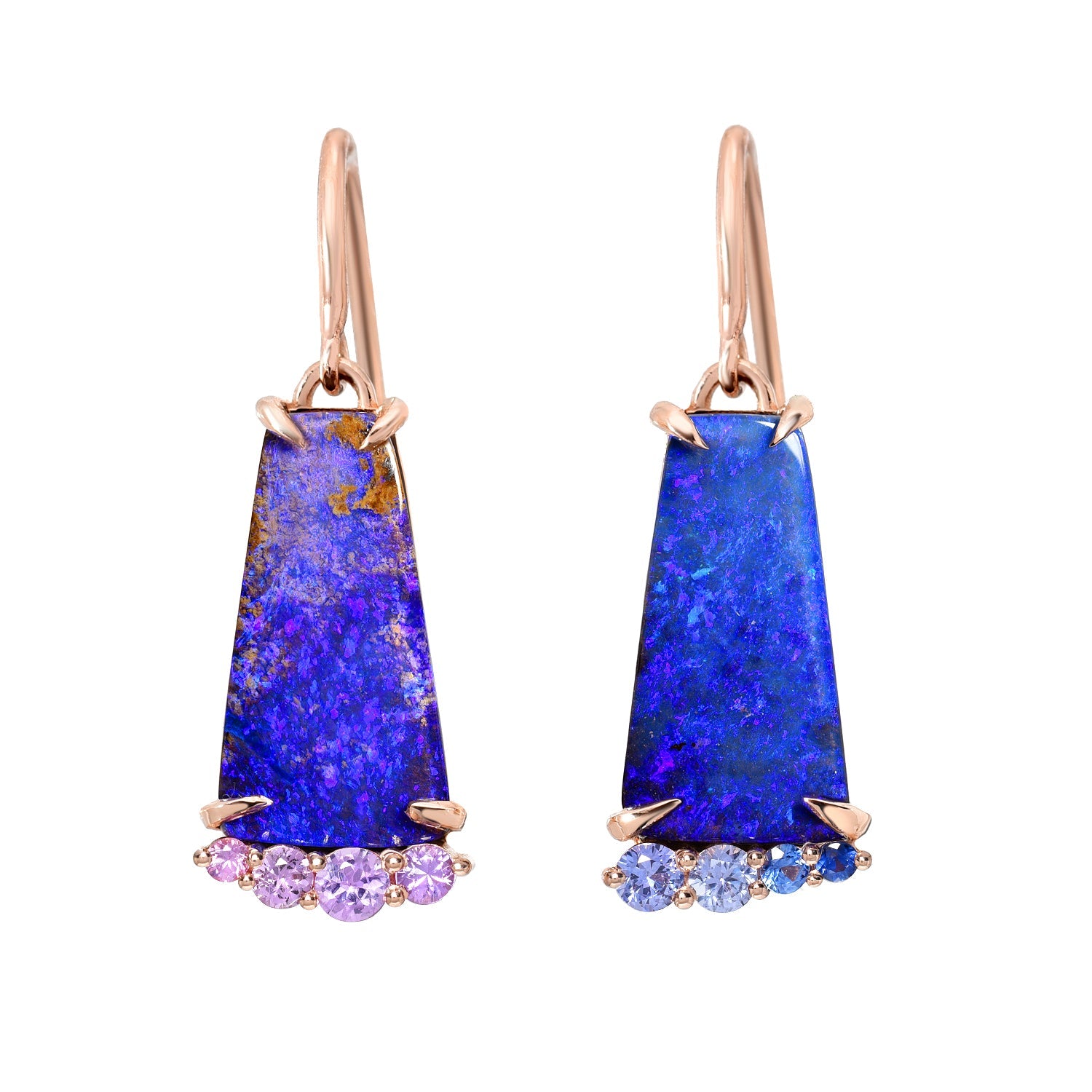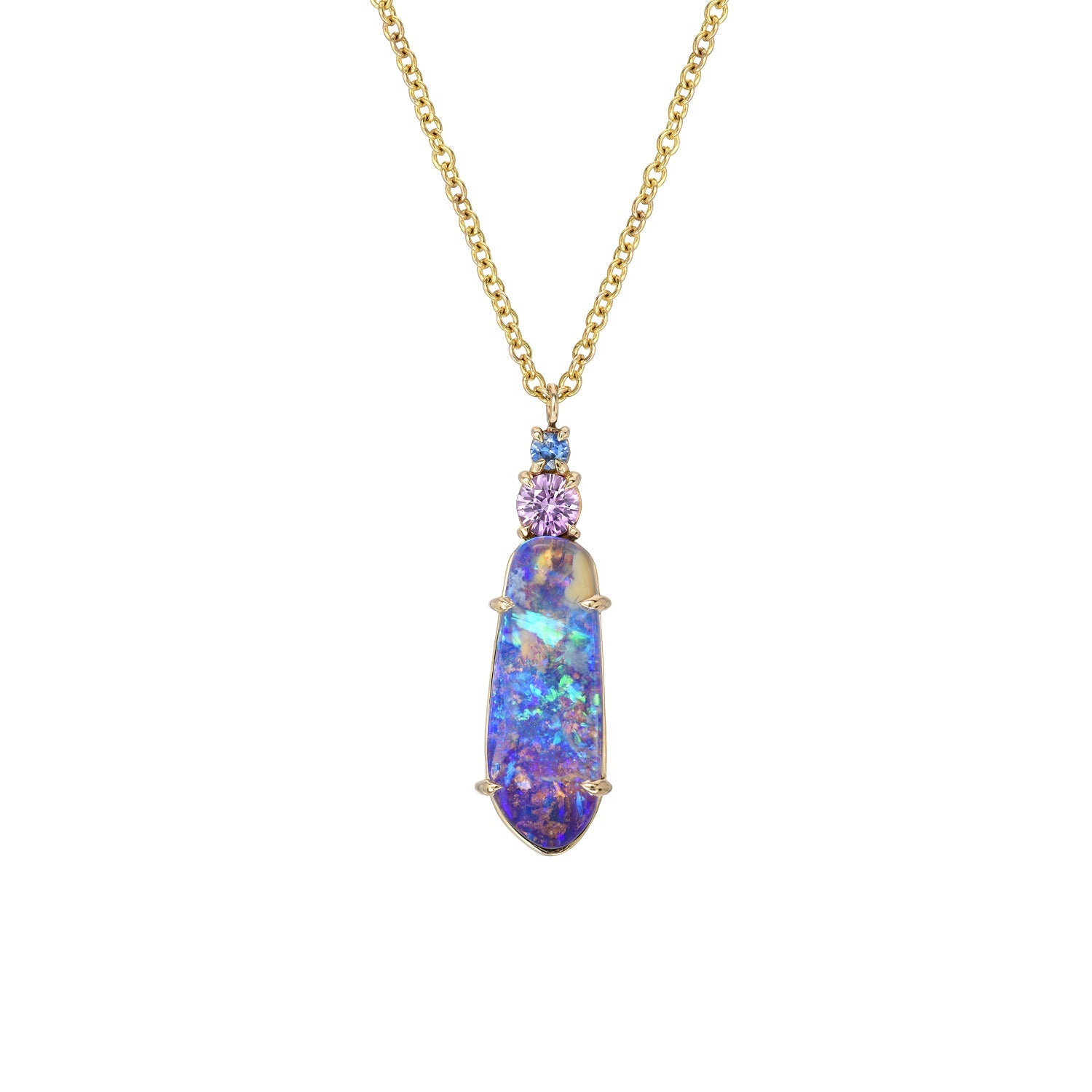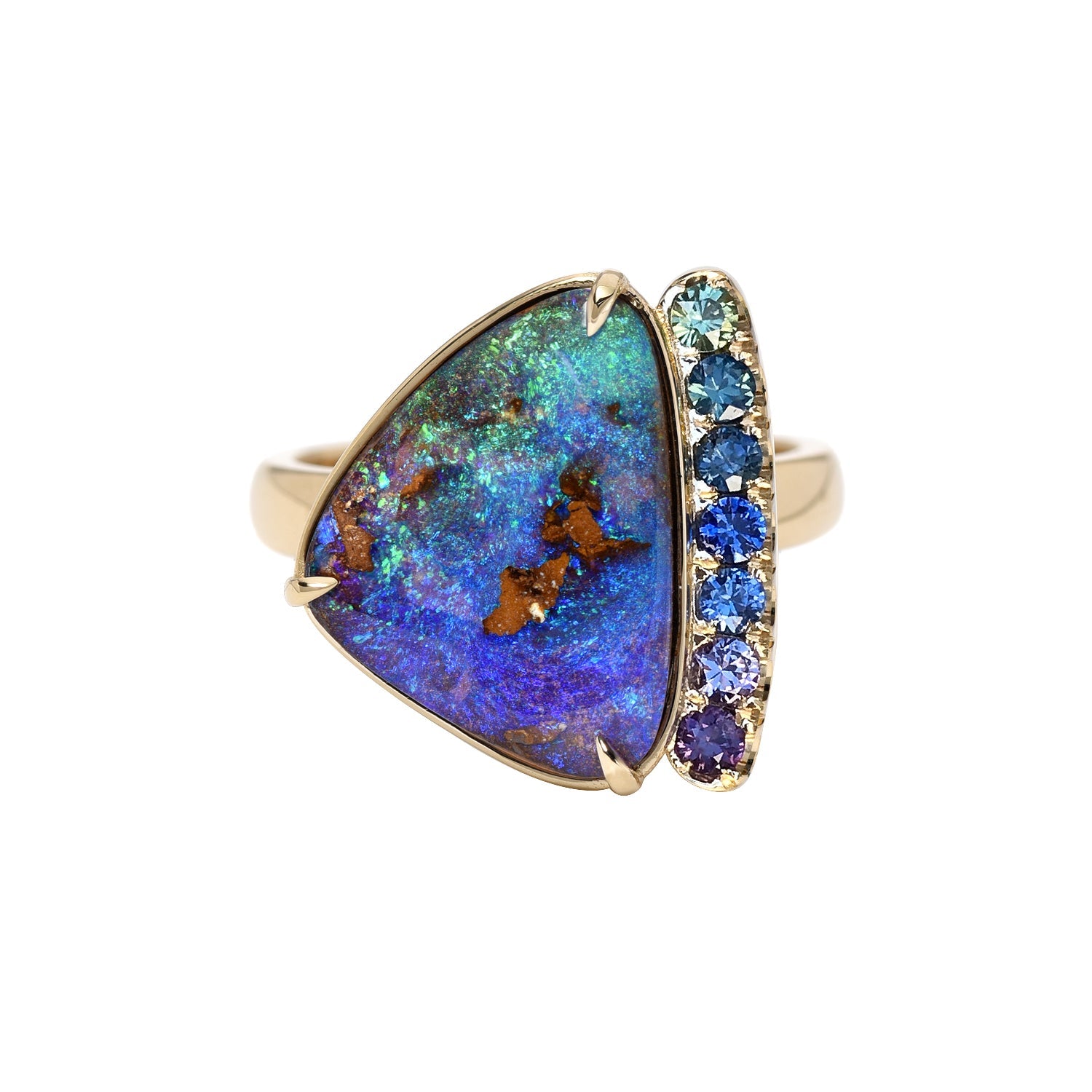
Famous Opals --- A Who's Who Of That Rich Gemstone's History
luis gomezShare
Opals have been around for literally millions of years. As one of the most sought-after gemstones in antiquity - gold and silver had nothing on this chromatic wonder - opals have acquired a long varied chronology. One full of intrigue, mystery, death-defying acts of bravery, and Indiana Jones-like thrill-seekers. In this article, we’re going to give you a look at some of the most famous opals in existence. The type of gemstones that built empires, that cost a fortune and had all manner of skulduggery acts attached to their rap-sheet. So sit back and enjoy some of the most famous opals in history and myths.
The Aurora Australis

This gemstone was unearthed by opal legend and master miner Charlie Dunstan in the area of Lightning Ridge, Australia in 1939. At this time, in the first half of the 20th-century, demands for large opals were at an all-time high. The stone was polished by Altman and Cherney after they bought it from the adventurous Dunstan. This blue, green, and red stone, at 180 carats, is currently on display in the pair’s showroom in Sydney and is valued at over $1 million.
The Fire Queen
Another of fast Charlie’s discoveries, the Fire Queen or the Dunstan’s Stone, was also mined at Lightning Ridge. The name comes because the gemstone looks, according to the newspapers of those days, like a “living ball of fire.” Legend has it that poor Charlie was swindled. Two tales stand regarding how he lost the stone. One, states that he sold it for less than 100 pounds — the man had an outstanding debt with some rather nefarious lowlife. The second states that he actually lost it in a bar, either in a poker match or paying an outstanding tab. The 900-carat heavyweight was eventually sold by none other than J.D. Rockefeller in 1949 for the sum of 75,000 pounds. As a postscript, after Charlie ‘lost” two other big stones - drunk out of his mind - the man was found dead in his hut from a gunshot wound to the head. The coroner declared it a suicide, but speculation and gossip say otherwise.
The Black Prince

Originally called the Harlequin Prince, the 181 carat stone was uncovered in 1915 at the Phone Line by Urwin and Brown in Australia. The Black Prince was later sold to a wealthy American serviceman that was doing his duty in the land from down under during that period. What makes this stone so unique , in addition to its actual size, it’s reported record breaking price tag (sold as one in a parcel of four) for black opal at that time.
Halley’s Comet

Recorded in the Guinness Book of Records as the largest uncut opal in existence, this gigantic stone was discovered by a pair of shifty opal miners doing some off-the-books prospecting in someone else’s claim. It was uncovered in a region at Lightning Ridge, Australia, by a mining group - and we’re not kidding here - called officially “The Lunatic Hill Syndicate.” Why is it called Halley’s comet? Because it was dug out just as that monster raced across the Australian skies.
Pride Of Australia

A little back history, Australia is where 95% of opals are uncovered — it’s our planet’s mine for that stuff. So, when an opal is called “the Pride of Australia” it has large shoes to fill. The Pride, also known as the “Red Emperor” was uncovered in 1915 by Tom Urwin and Snowy Brown at Phone Line. The stone is shaped like the Australian continent and has toured at least 5 World Flies. In all of these events, it has been promoted as: “the greatest opal of Australia, and therefore the greatest opal of the world.”
The Empress Of Australia
Back in Australia during the opal rush of the early 20th century, pubs and shantytowns - full of prospectors - seemed to sprout overnight. It was what you would expect of a place brimming with ambitious opportunistic predators with nothing to lose and money springing from the ground in the form of gemstones. The Empress of Australia was mined in 1915 right where the Pride of Australia was unearthed. It was a red masterpiece. No one really knows its backstory, but once the miners got off the claim and went into town for a refreshing cold one, the stone started slipping hands. There was a barroom fight and the Empress hit the floor shattering into two pieces. Today, one piece is a pendant while the second is mounted on a gleaming necklet.
The Flame Queen

Mined in Bald Hill, Australia, the Flame Queen has an impressive story. The 263.18 carat stone was uncovered by three partners, Jack Phillips, Walter Bradley, and “Irish” Joe Hegarty. They simply found a claim that had been left when the owner went off to fight in WWI. The area was brimming with brigands and an incredibly risky place to live. Full of hungry and desperate folks. The three men, broke and exhausted from working the mine, sold the Flame Queen for 93 pounds. They counted themselves lucky. Then word got around of the gem’s true price. Given its incredibly rare appearance - a domed red-gold center surrounded by a blue-green ellipses (think fried egg shape) - it is extraordinarily valuable and considered by some to be the most famous of all opals.
The Hope Opal
One of the most obscure and bizarre stones in existence, the Hope Opal is one of the most famous, non-Australian stones in the world. The 35-carat transparent blue gem, if viewed from one angle, features a carved human face surrounded by sun rays. That feature is where its second name comes from “Aztec Sun God Opal.” It is assumed to be a Mexican opal, first discovered in 1839, but rumors of its existence can be traced back to the 17th century.

At NIXIN Jewelry, we delight in the discovery of extraordinary opals and communicating their stories through the pieces we create. We offer a collection of handcrafted Australian opal rings, opal necklaces, opal bracelets and opal earrings in an array of sizes and styles. Ready to ship opal jewelry also available.



